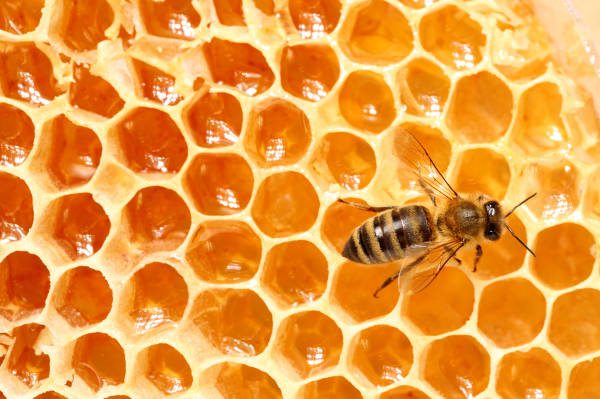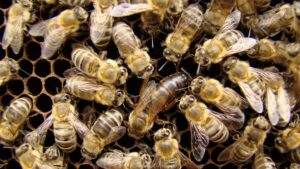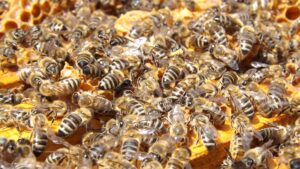One of the biggest problems facing honey bees, the parasitic mite Varroa destructor (varroa) is now found almost worldwide and usually kills untreated hives within three years. For varroa control, many beekeepers use the chemical tau-fluvalinate, marketed as Apistan®, but its effectiveness has been in decline since the mid-1990s. Scientists studying varroa mites collected from Florida and Georgia, USA, have identified two new mutations that give the parasites resistance to tau-fluvalinate. The discovery of the two mutations enables testing of varroa populations to determine whether control with tau-fluvalinate will be effective. The research was carried out by scientists working in Spain, the USA and Germany in collaboration with a team at Rothamsted Research, which is strategically funded by the Biotechnology and Biological Sciences Research Council (BBSRC). The study is published today in the journal PLOS ONE.
Honey bees are pollinators of many wild plants and crops important in human nutrition. A scourge of honey bees, the mite Varroa destructor was originally confined to the Asian honey bee, but shifted to its sister-species, the European honey bee, in the first half of the twentieth century and has since spread across the globe. The mites feed on the body fluid of adult and immature honey bees, transmitting bee viruses such as deformed-wing virus. Varroa causes severe damage to honey bee colonies and is one of the biggest threats to beekeeping. The varroa mite is a key factor contributing to declining numbers of honey bee colonies in Europe and North America, which may lead to problems in achieving adequate pollination of crops and wild plants.
Mite-killing chemicals like tau-fluvalinate are used in varroa control schemes, along with other chemical and physical methods, but the development of resistance to the compound has been widely reported in the parasites. Like other pyrethroid chemicals, tau-fluvalinate interferes with proteins called voltage-gated sodium channels involved in generating electrical signals in nerve cells. In susceptible varroa mites, pyrethroids cause overstimulation of the nervous system resulting in death.
The scientists previously found that resistance to pyrethroid treatment has evolved in varroa from central and southern England through a mutation altering a single letter in their DNA, which causes a change in the structure of the sodium channel at the proposed binding site of pyrethroids. The new study shows that a pair of mutations affecting the same part of the sodium channel have evolved in the American varroa populations, different from the mutation seen in England. One or both of the newly identified mutations was found in 98 percent of the varroa from Florida and Georgia that survived treatment with tau-fluvalinate.
Joel González-Cabrera, scientist at Rothamsted Research who led the study, said: “We identified the mutations in a known hot-spot for pyrethroid resistance on the sodium channel protein—a region proposed as the binding site for these compounds. Together with our previous work on European mites, this finding allows us to develop diagnostic screening tests to analyse individual mites for the presence or absence of the mutations. The diagnostic test should help beekeepers to decide whether to use pyrethroid-based chemicals to control this highly damaging parasite.”
Joel González-Cabrera was supported by a Marie Curie Intra European Fellowship within the 7th European Community Framework, and additional funding was provided by the Florida Department of Agriculture and Consumer Services.













